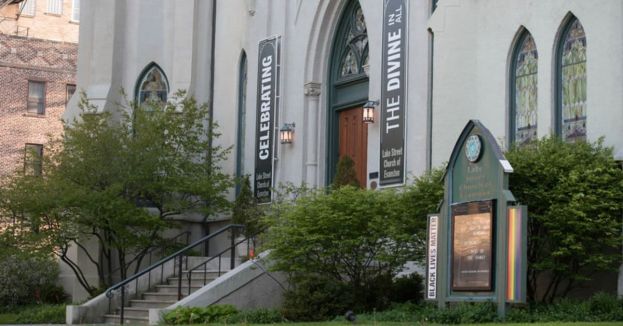
www.newsbusters.org
FINALLY: NBC Breaks the Ice on Somali Welfare Scam Roiling Minnesota
It took about a week, but it is our duty to report that the Minnesota Somali welfare scam has finally been reported on Elitist Media nightly news. Unsurprisingly, the network to break the seal was NBC.
Watch as Senior White House Correspondent Gabe Gutierrez does the right thing and exposes NBC’s viewers to an egregious theft of public funds via fraud, regardless of the fraudsters’ ethnic origins:
NBC Nightly News cracks the ICE, if you will, on reporting the Somali welfare scam currently rocking Minnesota pic.twitter.com/Q1P9y02YWZ
— Jorge Bonilla (@BonillaJL) December 3, 2025
GABE GUTIERREZ: It comes as the administration ramps up its crackdown on illegal immigration. A senior law enforcement official tells NBC News ICE is planning an operation this week in the Minneapolis-St. Paul area, where there’s a large Somali population.
KRISTI NOEM: You told me to look into Minnesota and their fraud on visas and their programs. 50% of them are fraudulent.
GUTIERREZ: Federal prosecutors have charged dozens of people in Minnesota's Somali community for allegedly stealing hundreds of millions of dollars in taxpayer money meant for social service programs.
DONALD TRUMP: This beautiful place and I see these people ripping it off. (VIDEO SWIPE) Their country stinks and we don't want them in our country. (VIDEO SWIPE) Where they come from: hell. And they complain and do nothing but bitch, we don't want ‘em in our country. Let ‘em go back to where they came from and fix it.
I didn’t say that Gutierrez’ mention of the welfare scam was expansive- it’s still just one sentence within a White House roundup. But that one sentence is the first mention of what would undoubtedly be a national multicycle story had the fraud happened in a red state. It’s (D)ifferent like that.
That one throwaway sentence provided NBC’s viewers with important background and context for President Trump’s subsequent remarks- an important context missing from ABC and CBS, which presented only the disembodied statements but with no context.
Here’s ABC:
STILL FAKE NEWS: ABC World News Tonight stripped all context from President Trump's remarks so as to avoid having to report on the MN Somali welfare scam, making "Trump lashes out" the story instead. pic.twitter.com/1fEC8e4r6U
— Jorge Bonilla (@BonillaJL) December 3, 2025
DAVID MUIR: Let's bring in Mary Bruce. Because, Mary, I know there's another breaking headline tonight from The White House. President Trump lashing out at immigrants from Somalia saying “I don't want them in our country.” I wanted to get you to report back on this. Here's what the president said first.
DONALD TRUMP: We're going to go the wrong way if we keep taking in garbage into our country. Ilhan Omar is garbage. She's garbage. Her friends are garbage. These aren't people that work. These aren't people that say, “let's go, c’mon, let’s make this place great.” These are people that do nothing but complain. They complain. And from where they came from, they got nothing. You know, they came from paradise, and they said this isn't paradise. But when they come from hell, and they complain and do nothing but bitch, we don't want them in our country.
David: And Mary, you learned tonight that this comes as ICE prepares to target Somali immigrants in Minneapolis?
MARY BRUCE: David, the president is increasingly going after Somali immigrants and now sources tell us that ICE is preparing for a surge operation in Minneapolis, which has a large Somali population. But tonight, the mayor of Minneapolis says President Trump is wrong, and that these immigrants have only greatly improved their community. David.
MUIR: Mary Bruce live at The White House tonight. Mary, thank you.
And CBS:
The CBS Evening News, also presuming their viewers are morons, stripped context from Trump's remarks about the Minnesota Somali welfare scam. pic.twitter.com/jTbaytmAkm
— Jorge Bonilla (@BonillaJL) December 3, 2025
WEIJIA JIANG: At the cabinet meeting, the president also talked about his new efforts to pause migration and singled out Minnesota congresswoman Ilhan Omar, who came to the U.S. as a Somali refugee.
DONALD TRUMP: Ilhan Omar is garbage. She’s garbage. Her friends are garbage. These aren’t people that work. They complain and do nothing but bitch. We don't want them in our country.
JIANG: Congresswoman Omar responded on social media posting, quote: “his obsession with me is creepy.” Tonight a U.S. official tells CBS News this week ICE is planning to surge resources to Minneapolis and Omar's district and to St. Paul, targeting people with deportation orders, some of whom are also from Somalia.
JOHN DICKERSON: Weijia Jiang at The White House. Thank you.
Both of these items focused on the ICE surge in Minneapolis and on depicting Trump’s remarks as somehow being the impetus for these ICE raids but, again, there was no mention of the massive welfare fraud scandal, or the also-underreported visa fraud scandal.
Likewise, there was no mention of Attorney General Keith Ellison facing bribery allegations in relation to the Somali welfare fraud scandal OR of the judge who inexplicably overturned a guilty verdict in a $7.2 million Medicaid fraud case. The networks are making sure viewers perceive that the ONLY scandal here is Trump’s reaction to the ACTUAL scandal. We might call this a Trumpwashing in service of a major omission.
In case you’re wondering the extent of the context stripped from President Trump’s remarks, here’s the whole exchange with Reagan Reese of the Daily Caller.
Here is the full Q&A between @reaganreese_ of The @DailyCaller and POTUS on Tim Walz, 80% of which was excised by ABC and CBS nightlies so as to avoid having to report on the exploding MN Somali welfare scam. pic.twitter.com/emlvClrHVO
— Jorge Bonilla (@BonillaJL) December 3, 2025















